Best
Camac
Harps
-
Overall: Blend of traditional and modern design elements
-
Best Feature: Resilient carbon fiber construction
-
TedScore™: 9/10
Best
Heartland Harps
-
Overall: Resonant soundboard
-
Best Feature: Innovative design for portability
-
TedScore™: 9/10
Best
Harpsicle
Harps
-
Overall: Lightweight and colorful design
-
Best Feature: Affordable compared to larger harps
-
TedScore™: 8/10
Picture yourself dancing around the room, playing the lightest carbon fiber harp. It’s like a dream come true—blending modern technology with ancient music to make playing feel effortless and magical.
When your harp is as light as a feather, you can bring your music anywhere, whether it’s to a sunny park or a cozy café corner. These harps make a beautiful, magical sound like the ring of a bell or the whisper of the wind.
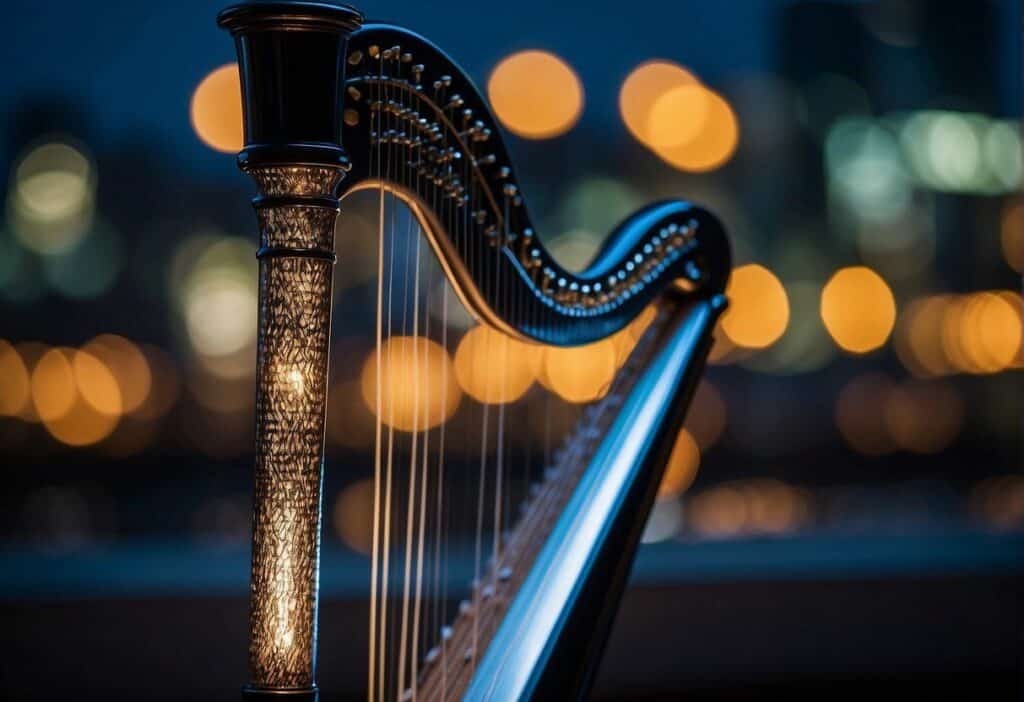
Keep on reading, and I’ll give you tips on choosing the perfect carbon fiber harp while you imagine its beautiful strings playing on your next adventure.
Join me, and let’s discover the wonders of modern harps together!
Design and Construction
The way carbon fiber harps are designed and built is exciting. I’ll talk about how these excellent instruments are made using advanced materials and techniques to impress harp players and audiences.
Carbon Fiber Materials
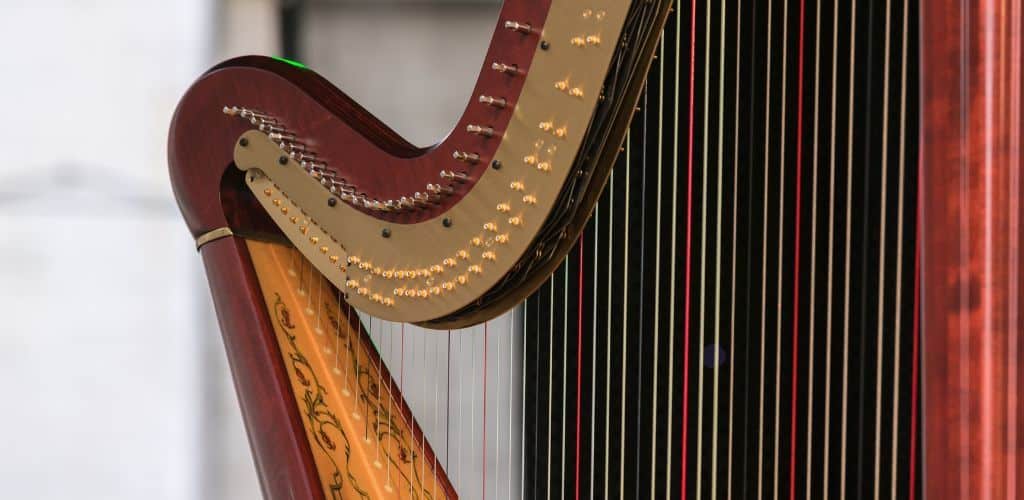
Carbon fiber is the game-changer in harp construction, lending its reputation for being remarkably light yet robust. It allows for a blend of durability and easier handling that I find truly impressive.
At the core of these harps is the innovative use of carbon fiber, which stands the test of time and rough use better than many traditional materials.
The weight savings for harpists are noteworthy—some models manage to shave off nearly a third of the weight compared to their wooden counterparts!
Advanced Features
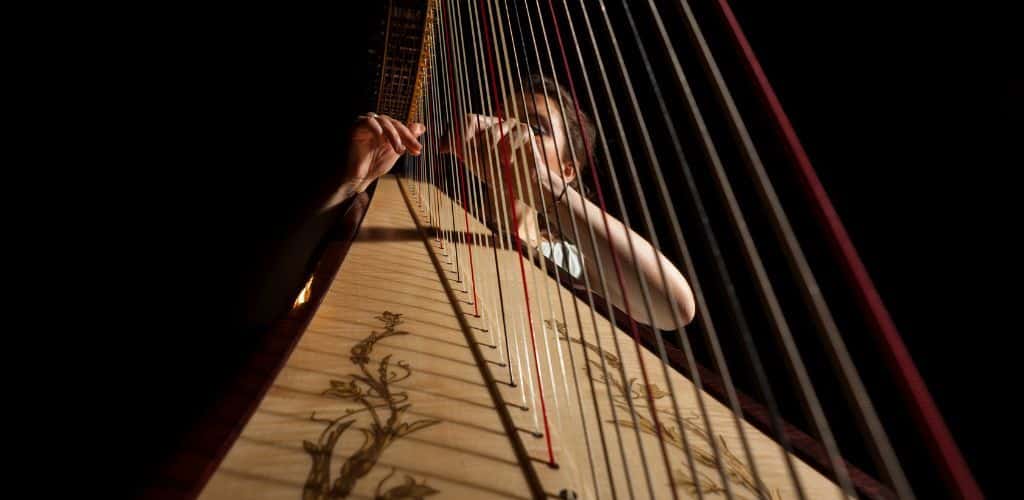
The electroacoustic carbon fiber harp is known for its rich tone, which was made possible by the integrated Ischell pickup system and an integrated Ischell amplification system.
These harps are designed to provide optimal projection, making them well-suited alongside a traditional Celtic harp.
Usually crafted with the finest spruce, these harps utilize state-of-the-art techniques to ensure high-quality sound production.
They are also portable, and with a dust cover and included accessories, they have everything you need for your journey.
They also boast impressive warm tones and specialty finishes, making them a versatile and attractive instrument for musicians.
Notable Carbon Fiber Harp Manufacturers
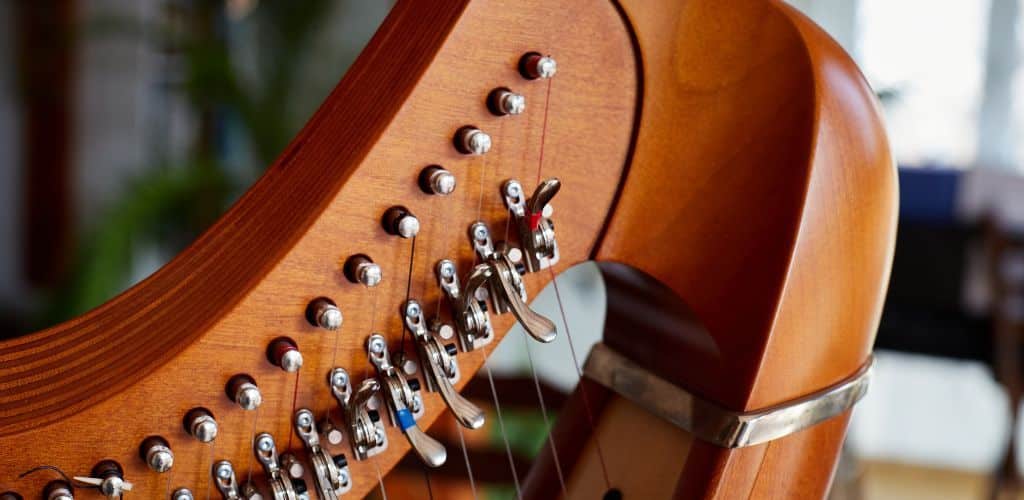
As I explore the world of harps, I’m amazed by how innovation in carbon fiber has changed these traditional instruments. The strings feel super light, and the frame is solid—it’s truly mesmerizing!
Heartland Harps
I’m really impressed with Heartland Harps, a leading brand in carbon fiber harps. They worked their magic by being the first to use carbon fiber, creating harps that are light and strong.
Their 36-string Legend harp is great for traveling musicians, and their lever harps are a refreshing choice for any player.
Heartland The Legend Harp

FEATURES: Resonant soundboard
OTHER INFO: Innovative design for portability
- Durable carbon fiber construction
- Suitable for traveling musicians
- Limited range compared to larger concert harps
When you click ‘Check Price’, you’ll see there are loads of great places to buy this item. Our personal favorite is Sweetwater for the US, and Thomann and Gear4Music for the UK & Europe.
They are the largest music retailers, with excellent customer service, competitive prices, really fast shipping, and the longest guarantees.
The professional musician who wrote this article combined many things,
from the product build, manufacturer’s reputation through to feedback
from other users, to create our famous TedScore™.
Camac Harps
Let me introduce you to Camac Harps, a top player in the world of carbon fiber harps.
This French company makes beautiful harps that mix old-fashioned charm with modern style. They offer a great variety, including lever harps and cool designs like the 34-string Excalibur, which is perfect for both new and experienced harpists.
Camac Excalibur
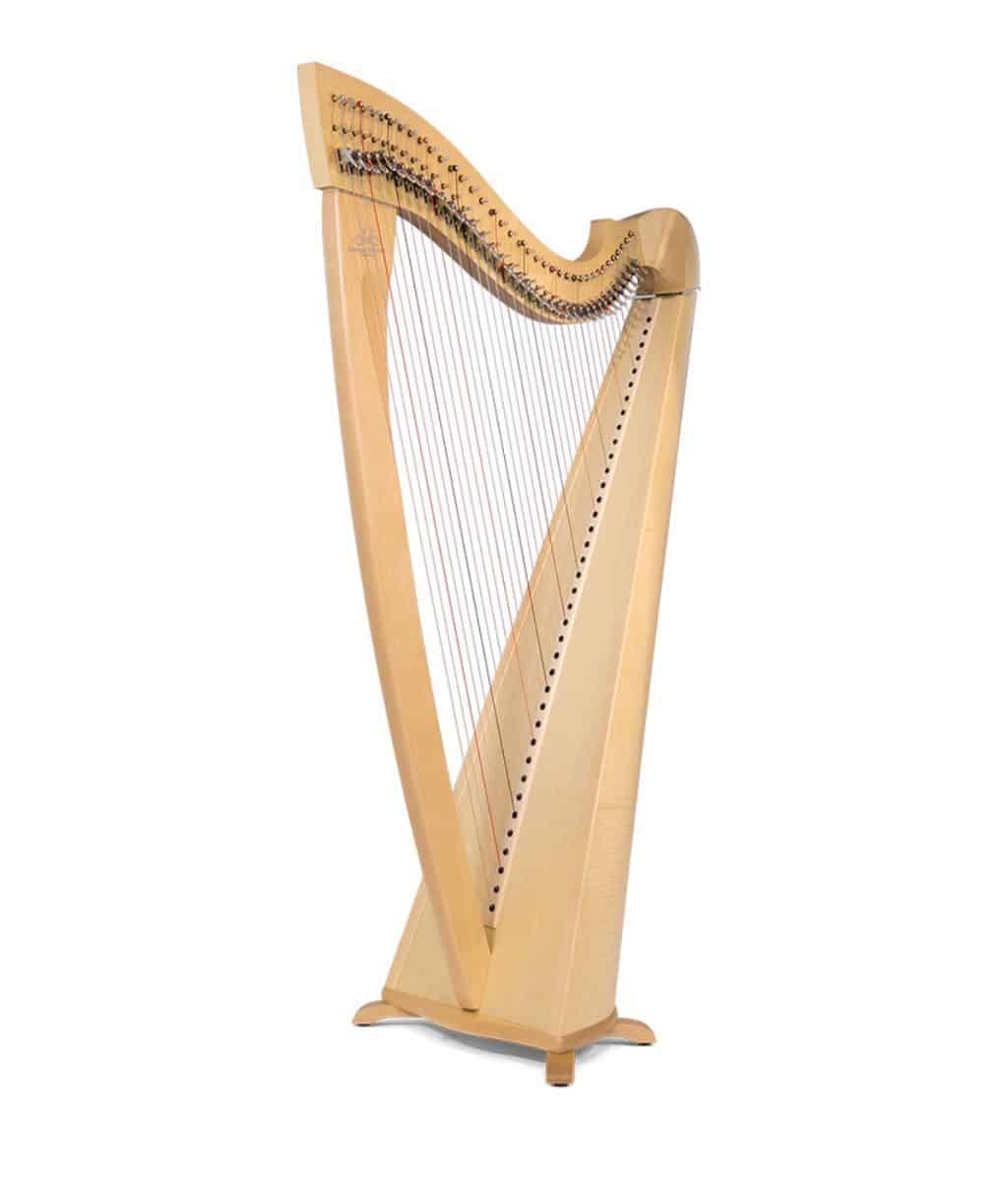
FEATURES: Blend of traditional and modern design elements
OTHER INFO: Resilient carbon fiber construction
- Portable and lightweight
- Innovative and modern design
- May have a different tonal quality compared to traditional wooden harps
When you click ‘Check Price’, you’ll see there are loads of great places to buy this item. Our personal favorite is Sweetwater for the US, and Thomann and Gear4Music for the UK & Europe.
They are the largest music retailers, with excellent customer service, competitive prices, really fast shipping, and the longest guarantees.
The professional musician who wrote this article combined many things,
from the product build, manufacturer’s reputation through to feedback
from other users, to create our famous TedScore™.
Harpsicle Harps
Harpsicle Harps Carbon Fiber line combines the portability and durability of carbon fiber with the renowned Harpsicle design, offering a lightweight and resilient option for harpists.
These harps suit musicians seeking a modern, travel-friendly instrument without compromising playability and sound quality.
Brilliant Harpsicle
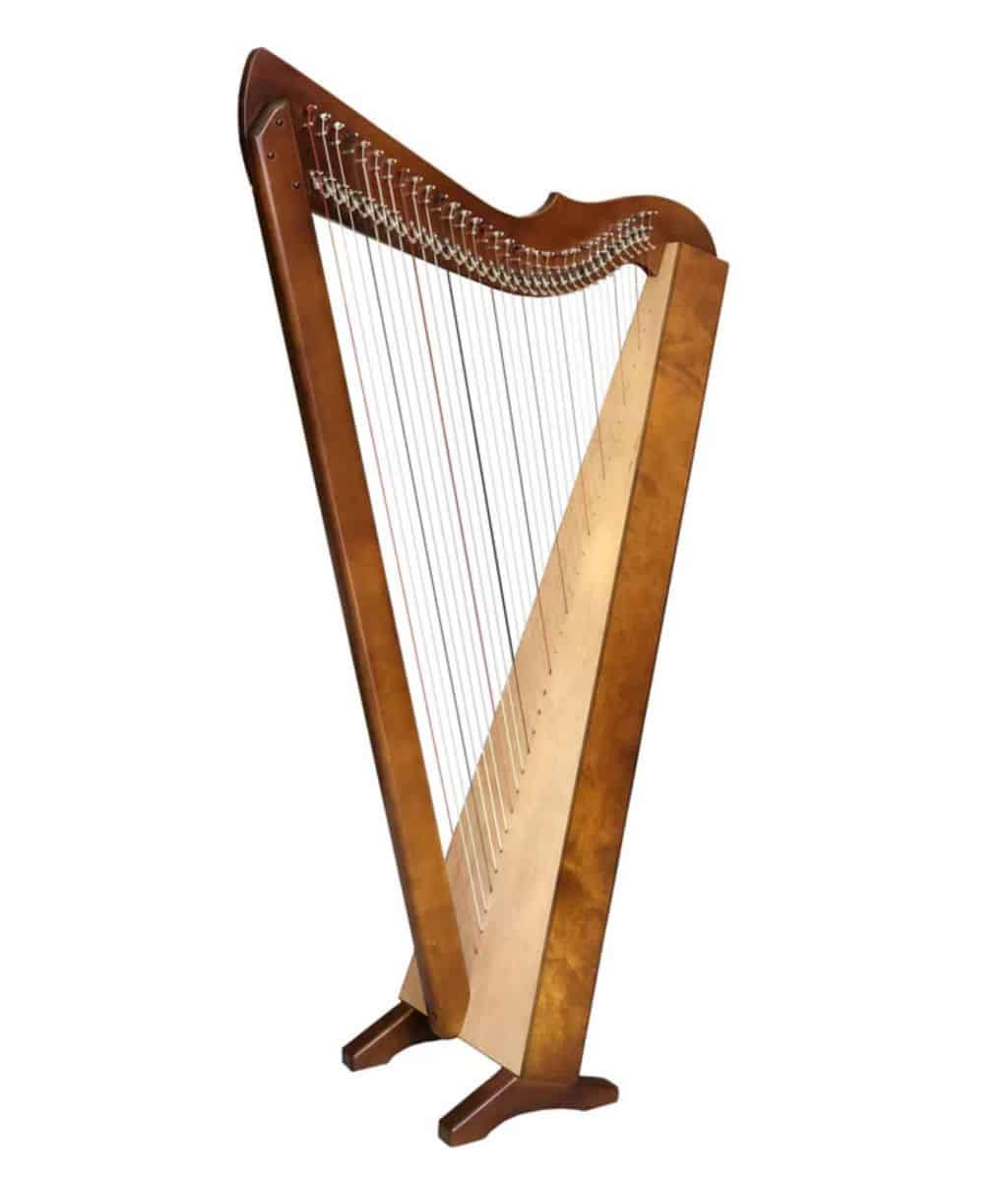
FEATURES: Lightweight and colorful design
OTHER INFO: Available in a variety of vibrant finishes
- Affordable compared to larger harps
- Sound less complex than professional harps
When you click ‘Check Price’, you’ll see there are loads of great places to buy this item. Our personal favorite is Sweetwater for the US, and Thomann and Gear4Music for the UK & Europe.
They are the largest music retailers, with excellent customer service, competitive prices, really fast shipping, and the longest guarantees.
The professional musician who wrote this article combined many things,
from the product build, manufacturer’s reputation through to feedback
from other users, to create our famous TedScore™.
Carbon Fiber Harp:
A Summary
When I first discovered carbon fiber harps, I was amazed by their unique features.
Not having to worry about the weather is a game-changer, and their ability to stay in tune longer due to humidity and temperature resilience is music to my ears.

Here’s a summary:
Durability: Carbon fiber triumphs in various climates.
Aesthetics: A modern look for a classic instrument.
Portability: Ease of transport for performers on the go.
While I still love traditional wooden harps, the practicality and consistency of carbon fiber are hard to ignore. They blend durability with elegance and offer a modern twist to the beloved ancient instrument.
Playing a carbon fiber harp brings joy and simplifies my musician’s life, combining science and artistry for a quality experience.
Don’t go yet, there’s more…
Read this comprehensive article about How to Play the Harp – Top 10 Tips!











The use of carbon fiber in harps symbolizes a significant leap forward in the craftsmanship of musical instruments. By harnessing the benefits of modern materials, we’re preserving the essence of music while ensuring its future.
Bethan Semmens, your insights into this innovation have deepened my appreciation for both the art and science of harp construction. It’s a marvelous blend of tradition and technology.
I get that carbon fiber is the future for a lot of things, but I’m skeptical about traditional instruments like harps benefiting from it. The charm of a harp comes from its natural wood tones and subtleties in sound that I doubt carbon fiber can replicate. And don’t even get me started on the resonant qualities of wood versus synthetic materials. Sure, carbon fiber has its perks in durability and weight, but does it really offer the same rich sound as wood?
Actually, carbon fiber can replicate and sometimes enhance the resonating qualities of traditional woods used in harp construction. Its strength-to-weight ratio permits design freedoms that wood doesn’t, potentially exploring new acoustic territories.
never really thought about harps before but this carbon fiber stuff sounds legit. mad props to the builders making these.
It’s fascinating how carbon fiber is being utilized in musical instruments, particularly harps. I’ve seen carbon fiber in automotive and aerospace applications, but never thought about its impact on traditional instruments. How does the sound quality of a carbon fiber harp compare to that of a wooden harp? Also, are there any notable differences in maintenance requirements?
The sound is surprisingly warm for carbon fiber, very close to wooden ones but with the bonus of being way more durable. Plus, way less hassle in maintenance!